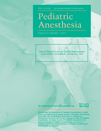Modification of anesthesia practice reduces catheter-associated bloodstream infections: a quality improvement initiative
Summary
Background
A major strategic hospital goal is the prevention of catheter associated bloodstream infections (CABSI). In 2009, at our institution, the CABSI rate for patients who traveled out of the ICU to the operating room and other procedural areas under the care of an anesthesiologist was increased compared to patients who remained on the unit.
Aims
Our objective was to develop countermeasures to improve intraoperative cleanliness by anesthesia providers, minimize contamination of intravenous access points, and ultimately reduce CABSIs.
Materials & Methods
A multidisciplinary team identified barriers to following best practices for reducing contamination of intravenous line entry-ports. Using Continuous Performance Improvement (CPI) or Lean techniques, staff directly impacted by the changes developed countermeasures to improve anesthesia practice. Compliance with the new “best practices” improved with coaching and feedback.
Results
Postimplementation, CABSI rates for patients traveling off the ICU with anesthesiology providers decreased from 14.1 per thousand trips off the ICU preintervention in 2009 to 9.7 per 1000 trips in 2010 and to 0 per 1000 trips in 2011 postintervention. Hospital-wide CABSI rates decreased from 3.5 per 1000 central line days preintervention to 2.2 per 1000 central line days after.
Conclusion
Practice modification by anesthesiology providers in the operating room can decrease workspace contamination and is associated with decreased CABSI rates.




